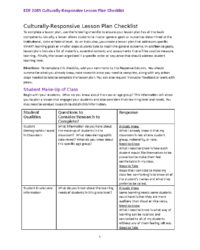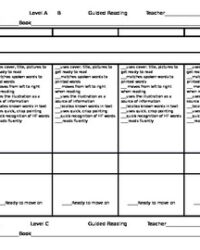Imagine a classroom buzzing with productive energy, where every student feels valued, engaged, and empowered to contribute. This isn’t just a dream; it’s the reality cooperative learning can create. By fostering collaboration, communication, and critical thinking, cooperative learning transforms traditional teaching into a dynamic, student-centered experience. However, just like any successful endeavor, it requires thoughtful planning and structure to truly thrive. You can’t simply group students and hope for the best; a clear roadmap is essential.
That’s where a well-designed cooperative learning lesson plan template becomes your invaluable ally. It provides the framework you need to move from the abstract idea of collaboration to concrete, actionable steps that ensure every lesson is purposeful and every group interaction is meaningful. Think of it as your blueprint for building a truly interactive and effective learning environment, guiding you through the process of setting clear objectives, defining roles, and planning for assessment.
Why a Structured Template Elevates Cooperative Learning Experiences
Implementing cooperative learning successfully goes far beyond just putting students into groups. Without a clear plan, groups can flounder, some students might dominate, others disengage, and the learning objectives could be lost in the shuffle. A robust cooperative learning lesson plan template acts as your organizational backbone, ensuring that every element of your collaborative activity is thoughtfully considered and purposefully integrated. It transforms potential chaos into constructive learning, making sure that students don’t just work together, but truly learn together.
This systematic approach helps you identify specific learning outcomes you want to achieve through group work. Are students meant to master a new concept, solve a complex problem, or develop particular social skills? The template prompts you to define these goals explicitly, ensuring that the group activity isn’t just busywork but a direct pathway to understanding. It also encourages you to think about how individual accountability will be maintained within the group structure, preventing the “freeloader” phenomenon.
Key Components of an Effective Template
A comprehensive template should guide you through all the necessary pre-planning. It’s not just about what students will do, but how they will do it and why. Consider these crucial elements when developing or utilizing your own template:
- Learning Objectives: What specific knowledge or skills should students acquire or practice? These should be measurable and clearly stated.
- Group Formation: How will groups be decided? Will they be heterogeneous or homogeneous? What size is optimal for the task?
- Roles and Responsibilities: What specific roles will each group member have (e.g., facilitator, recorder, timekeeper, presenter)? Clear roles prevent confusion and promote participation.
- Task Description: A detailed explanation of the activity, including step-by-step instructions and any resources needed.
- Interdependence Mechanisms: How will students need to rely on each other to succeed? This might involve shared resources, sequential tasks, or a single group product.
- Individual Accountability: How will you assess each student’s contribution and learning within the group context?
- Social Skills Instruction: What specific collaborative skills will you teach or reinforce (e.g., active listening, conflict resolution)?
- Assessment and Reflection: How will you evaluate both the group’s product and process, and how will students reflect on their learning and collaboration?
By meticulously planning each of these aspects using a cooperative learning lesson plan template, you set the stage for a truly effective and engaging learning experience. It empowers you to anticipate challenges, provide necessary support, and ensure that every student contributes meaningfully to the collective success of their group.
Implementing Your Cooperative Learning Lesson Plan Template with Confidence
Having a fantastic cooperative learning lesson plan template is only the first step; the real magic happens in its implementation. Once your plan is meticulously crafted, the next phase involves preparing your students, facilitating the activity, and ensuring that the learning outcomes are achieved. It’s about setting the stage for success and then skillfully guiding your students through the collaborative journey you’ve designed.
Before students even begin their group work, it’s crucial to clearly communicate the purpose of the activity, the learning objectives, and the expectations for group behavior. Explicitly introduce the roles and responsibilities, perhaps even modeling how each role contributes to the overall task. Review any social skills you expect them to use, like active listening or constructive disagreement. This upfront preparation dramatically reduces confusion and sets a positive tone for collaboration, making sure everyone understands their part in the larger puzzle.
During the activity, your role shifts from lecturer to facilitator. Circulate among the groups, observe their interactions, and offer support when needed. Resist the urge to solve problems for them; instead, guide them with probing questions that encourage critical thinking and peer support. Your presence as a coach, rather than a director, reinforces their independence and problem-solving abilities. Remember, the goal is for them to learn from each other, not just from you.
Practical Tips for Smooth Implementation
- Clear Instructions: Ensure all instructions are crystal clear and perhaps written down or displayed visually for groups to refer to.
- Time Management: Allocate specific timeframes for each part of the activity and provide regular reminders.
- Monitor and Support: Actively walk around the room, listen to discussions, and provide targeted feedback or prompts.
- Intervention Strategy: Have a plan for how you will address groups that are struggling with the task or with group dynamics.
- Debriefing: Always include time for whole-class debriefing after the activity. This allows groups to share their findings, reflect on their process, and consolidate their learning.
Mastering cooperative learning in your classroom is a journey, and a well-utilized cooperative learning lesson plan template is your most reliable compass. It empowers you to design experiences that are not only engaging but also deeply effective in cultivating essential academic and social skills. By meticulously planning and thoughtfully implementing, you unlock the full potential of collaborative learning, transforming your classroom into a vibrant hub of shared discovery and mutual growth.
Embracing this structured approach means you’re not just assigning group work; you’re orchestrating meaningful educational encounters. It allows you to build a classroom culture where students genuinely support each other’s learning, where every voice is heard, and where the collective effort leads to individual excellence. Your students will not only master content but also develop invaluable interpersonal skills that will serve them well far beyond the classroom walls, preparing them for a collaborative future.


